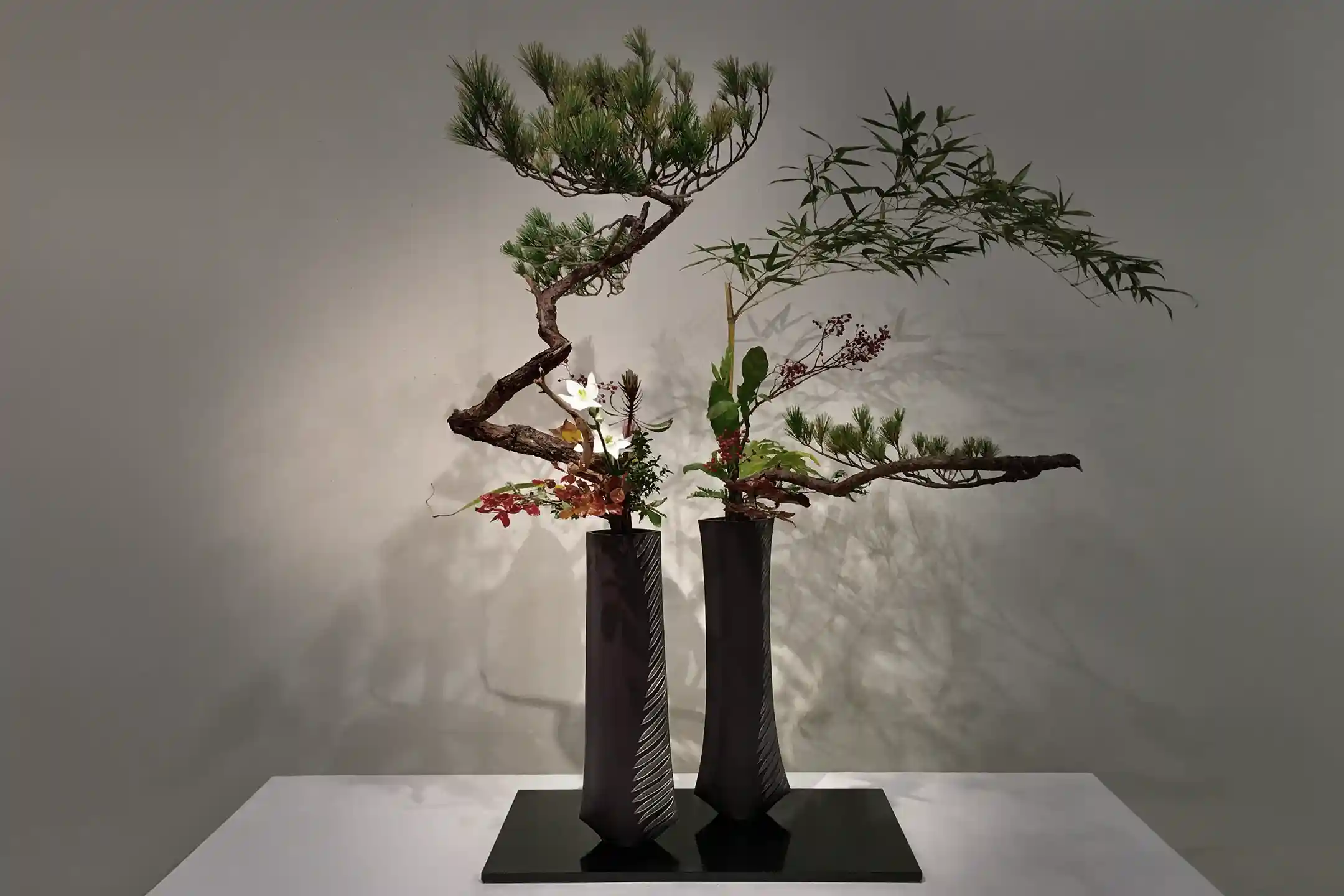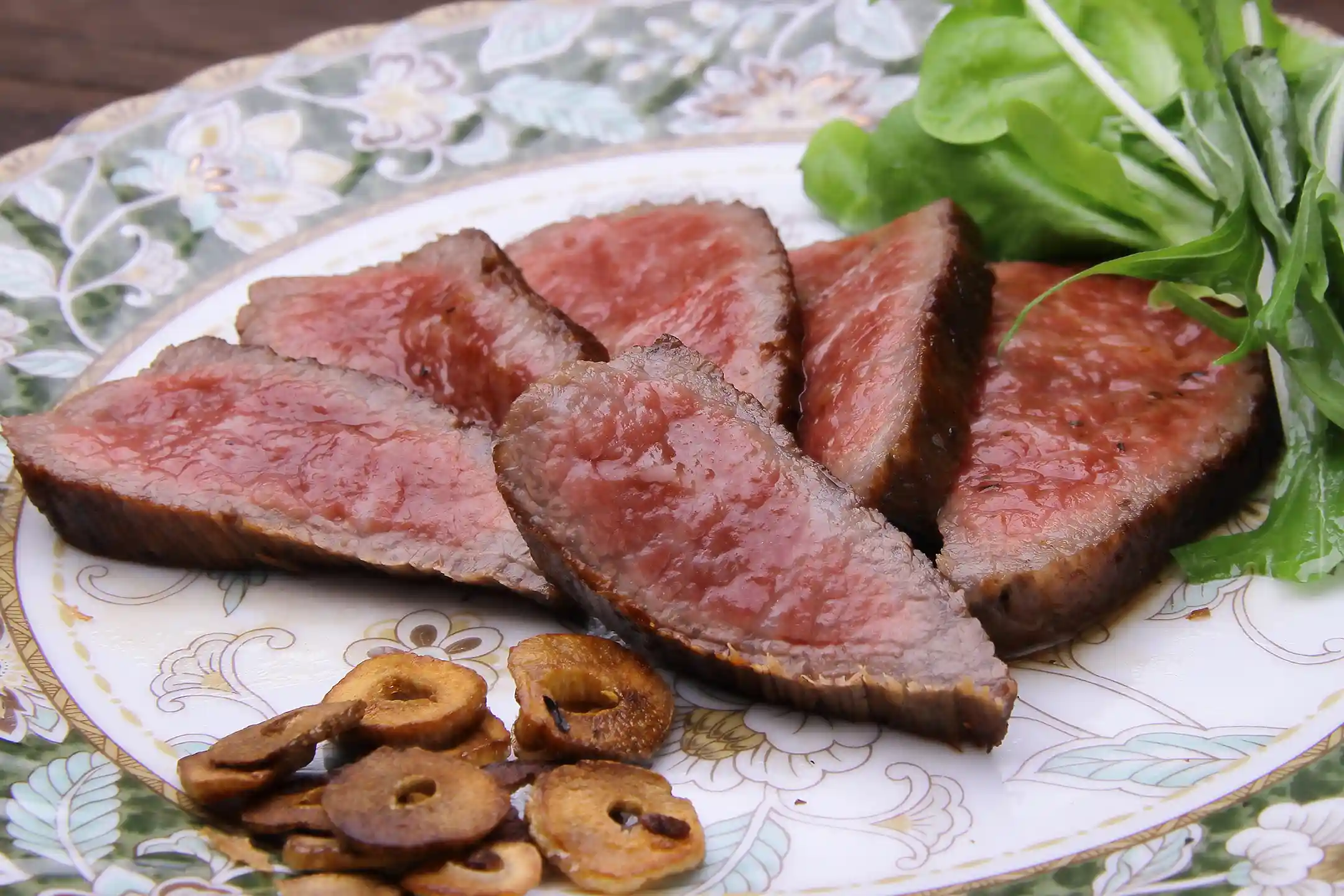Traditional Japanese flower arrangement (ikebana) is an art where Japan’s unique view of nature blends with deep spirituality. Ikebana, the country’s most iconic form of flower arrangement, isn’t about simply “decorating” with flowers; rather, it uses them as a medium to rediscover our relationship with nature and people.
For travelers used to the lush bouquets of the West, the quiet stillness and open space of ikebana can be a refreshing surprise — it feels as if, “before you know it, you’ve become part of the artwork.” In this article, you’ll explore ikebana from multiple angles — from traditional aesthetics to sustainability — inviting you on a journey into the profound depths of Japanese culture.
Ikebana — Japan’s World-Renowned Flower Art
In Japan, ikebana is about carefully choosing seasonal plants to create an arrangement where the vase, the surrounding environment, and even you as the viewer all resonate together. Arrangers focus on bringing out each stem’s life — a care that shows in everything from their choice of tools to their graceful movements. This attentive approach can leave you feeling akin to an honored guest at a traditional tea ceremony.

The Aesthetics and Spirituality of Ikebana
In contrast to Western arrangements, which often favor an “aesthetic of addition” with lush designs, ikebana embraces an “aesthetic of subtraction.” It uses only a few carefully chosen elements to suggest an infinite expanse(*1). The idea is that instead of humans “dominating” nature, we are “breathing together” with it. By cherishing empty space, ikebana invites you, the observer, to project your own story into the arrangement.
Kadō, the traditional way of flowers, turns each gesture into a form of respectful ritual, encouraging a moment of introspection(*2). This practice encourages you to stay true to yourself rather than imposing too many outside influences. Many Western participants note that, “in the quiet, a variety of emotions within me floated to the surface,” highlighting the deeply personal impact of this silent dialogue with nature.
.webp?width=750&height=500&name=Ikebana_International_Paris_2019_(23).webp)
Enjoying Ikebana’s Diversity Through Its Schools
Across Japan, there are more than 100 schools of ikebana, each with its own history and philosophy. The oldest school, Ikenobō, carries forward the elegance of imperial court culture even today. The Sōgetsu school, by contrast, is known for its bold, avant-garde expressions, while the Ohara school pioneered designs using shallow bowls, meant to look beautiful even in Western-style rooms.
Even though all these schools practice the same art of “arranging flowers,” each interprets the relationship between nature and people differently. For a curious traveler like you, noticing these nuances makes exploring different styles even more fascinating. It turns cross-cultural comparisons into a delightful part of the experience.
Flower Arrangement Experiences Across Japan
Trying ikebana during your travels allows you to savor how the local climate and history seep into each creation. Learning about the origins and colors of the plant materials becomes a shortcut to understanding a region’s culture and ecosystem. And when you chat about your impressions with a local person arranging flowers beside you, you’ll find conversation flows easily — transcending differences in nationality or generation.
Ikebana in Kyoto’s Temples and Historic Schools
In Kyoto, the birthplace of kadō, even first-time visitors can join ikebana classes without hesitation. At the Ikenobō Kaikan, adjacent to the iconic Rokkakudō temple, English-language lessons are offered so travelers can participate comfortably(*1). In these classes, instructors don’t just teach flower angles and how to trim a stem; they also share the story behind why a particular curved branch is considered so precious. This narrative approach helps you realize that “the way of seeing flowers = the way of sensing the world” varies between cultures.
At Ninnaji, a World Heritage temple in Kyoto, you can even learn Omuro-ryū ikebana from the monks of the temple’s own school. In this unique experience, the temple’s history and the spiritual aspects of the flowers resonate together, allowing you to feel “prayer” and “art” at the same time in a rare, profound moment(*2).
.webp?width=750&height=500&name=anna-cicognani-RRl4UPoC-8E-unsplash%20(1).webp)
Networking Events and Special Workshops with Renowned Flower Artists
Workshops by the famed ikebana artist Shōgo Kariyazaki are like live performances where traditional techniques meet bold colors. When participants share personal memories of flowers from their home countries, Kariyazaki weaves those emotions into his creations, telling each person that “your story now breathes within a Japanese vase.” This interactive style makes you feel truly connected to the art(*3).
At the Sōgetsu Kaikan in Tokyo’s Akasaka district, the international class offers a blend of structure and creative freedom. You start by learning the basic “forms,” then move on to free-form arranging, allowing your cultural background to elevate the individuality of your work.
During the post-creation critique, the emphasis is on co-creation: instead of simply “borrowing a culture,” students are praised for creating through genuine exchange — a wonderful reminder that art blossoms through dialogue(*4).
Japanese Flower Arrangement That Harmonizes with Modern Spaces
Ikebana can seamlessly blend into modern interiors, whether in a minimalist hotel lobby or a living room furnished with Scandinavian design. Many Western guests are often astonished to discover that even with so much open space in an arrangement, the room doesn’t feel “empty” at all. By stripping a composition down to its essence, the story carried by the flowers becomes even more intense — proving that the simpler the space, the more its “narrative” stands out.
Refined Interior Design with Ikebana
Placing a single camellia in your entryway is a wordless gesture that says, “You are welcome here, and nature welcomes you too.” If you enliven your living room with one dramatic branch, it lets the changing seasons speak more eloquently than any wallpaper ever could. In one luxury hotel, a gigantic ikebana piece dominates the center of the lobby, while palm-sized moss ball arrangements adorn each guest room, cleverly shifting the ambiance between “public” and “private” spheres(*1).
This contrast perfectly exemplifies the Japanese sensibility of reading a space’s purpose and placing flowers at an appropriate scale.

Japanese Flower Arrangement and Sustainability
The ikebana spirit of “achieving beauty with only what’s needed” resonates strongly with today’s environmental awareness. Practitioners often consider a flower’s origin and growing method when choosing materials — a practice that supports growers’ livelihoods and soil conservation. Many households now repurpose leftover branches into dried flower décor after an arrangement fades, extending the life of the materials.
Selecting Sustainable Materials and Ethical Practices
In ikebana, you can find beauty in a crooked branch or an aging leaf. By embracing what might seem like “flaws” as unique features, arrangers create designs that reduce waste while making each piece more distinctive(*1). There’s also a growing movement to choose locally grown or pesticide-free flowers, with increasing attention on fair compensation for everyone involved in the flower’s journey from field to vase(*2).
Eco-Friendly Travel Through Japan’s Flower Spots
Exploring Japan’s famous flower spots in an electric vehicle (EV) not only cuts down on emissions, but also turns your journey into an experience of “caring for the environment as you travel.” Around destinations like Hitachi Seaside Park in Ibaraki or the Fuji Shibazakura Festival at the foot of Mt. Fuji, fast chargers are now available(*3)(*4).
The farther you drive, the more you feel the rewarding sense of embarking on a “journey to protect the flowers.” These eco-friendly choices — aimed at preserving beautiful landscapes for the future — add an extra layer of richness to your travels.
Finally

Japanese ikebana is not just about decorating with flowers — it’s a profound art form that fosters harmony with nature and invites a quiet conversation with yourself. Through its many schools and styles, you experience how each offers a unique perspective on our relationship with nature, enriching cross-cultural understanding in the process. Hands-on experiences, whether at a historic temple in Kyoto or a chic workshop in Tokyo, will undoubtedly make your journey even more rewarding.
Ikebana also complements modern interiors, adding depth to any space it graces. Moreover, its links to sustainability — from mindful material selection to ethical initiatives — show how art can contribute to caring for the environment.
Through Japanese flower arrangement, you are invited to discover the profound beauty and new perspectives that flowers, as a medium, can bring into your world.
Author Bio





.webp)
.webp)